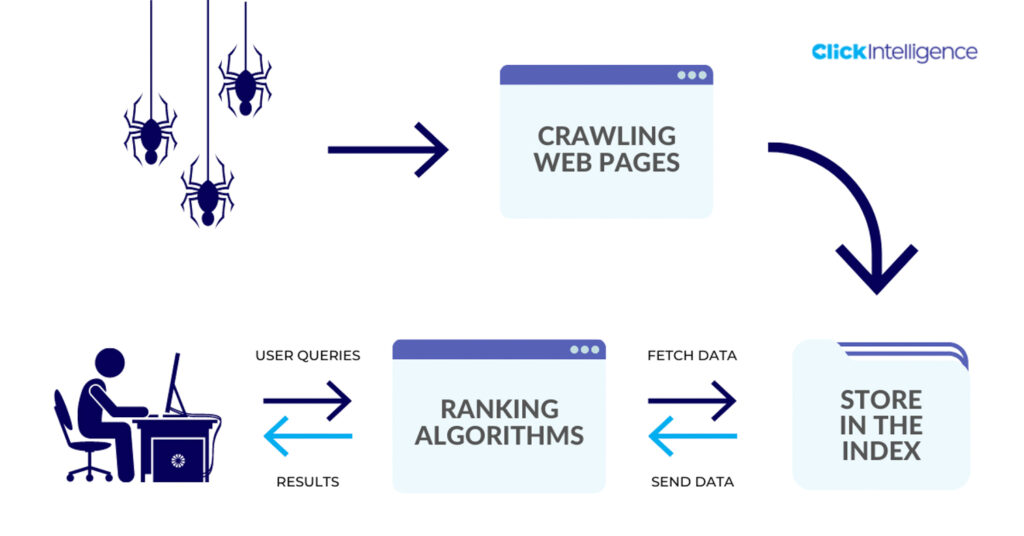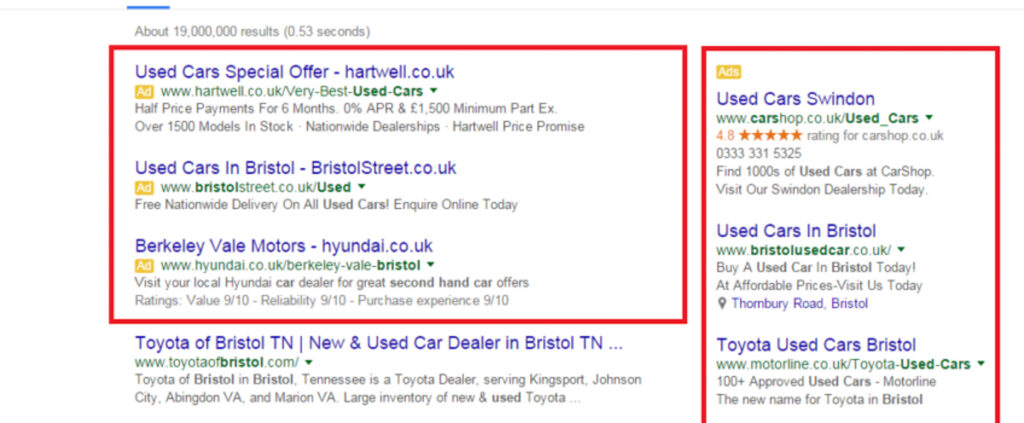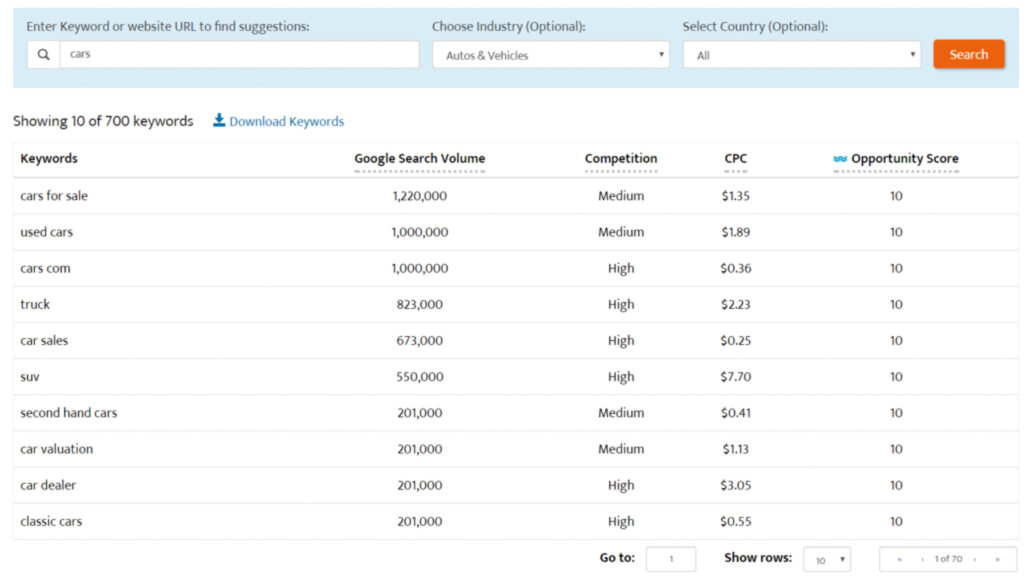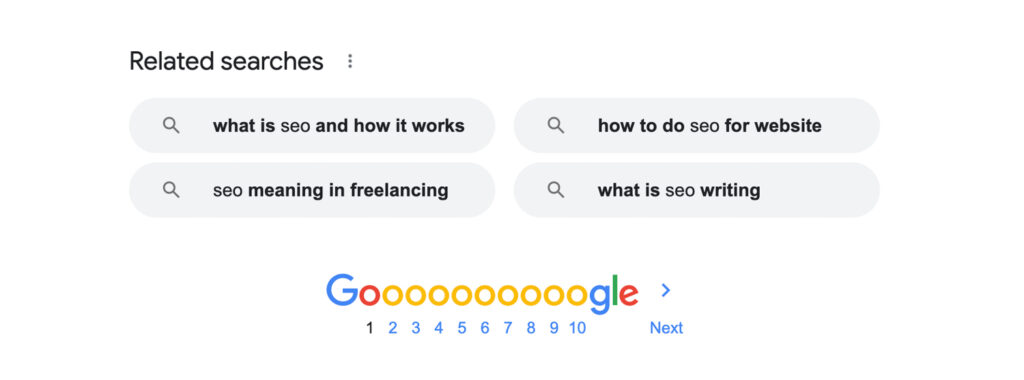
When a user inputs a request into a search engine like Google, Google undertakes an instantaneous yet highly sophisticated process to filter through content that will be most relevant to that user’s search. The best ten results will find themselves on the first page of Google results - and it's for these highly coveted spots that businesses engage in search engine optimisation (SEO). There are a variety of factors that are taken into account when Google processes the top ten search results, including content, technical configuration and linkback popularity. Whilst Google is not the only search engine, it is heavily used in Australia and is the largest search engine. This article will use Google as an example however these SEO fundamentals work the same for other search engines.

In order to understand the importance of SEO, you need to understand how a search engine ranks content. There are three stages:
- Crawling: this is the process of Google sending out crawl bots to find new or updated pages to add to Google, normally done through following the links on a page to new pages.
- Indexing: Google then analyses and understands what the page is about and stores this information in the Google Index - a database of all the websites that Google has crawled.
- Serving results: When a user inputs a query, this is the stage where Google will determine the highest quality results and rank the best websites.

SEO is critical for businesses as it makes your website more visible to prospective clients, who in turn will have a higher chance of converting into real customers. Search engines help people to find whatever they’re looking for, and in order to provide the best user experience, Google will rank websites based on quality. Whilst it is possible to be listed at the top and bottom of the search results through pay per click ads, these ads are costly and largely ignored by the users. Focusing on organic listing is cost-effective and the most proven way of driving traffic to your website.

There are four key areas when it comes to SEO. We will delve further into these four areas in more detail, but for now they are:
- Keyword research: Understanding what keywords prospective customers use will increase the likelihood of traffic being directed to your site.
- Content quality: Content creation and optimisation is central to an SEO strategy; in order to rank in the top ten results your website needs to offer added value, be readable and answer any questions a visitor may have.
- Technical optimisation: Usability is an important factor in ranking; Google prioritises user experience and if your website is slow or has broken links, Google won’t promote it.
- Link building: In order to assess your site’s reliability, Google will look at how many links direct to your website and how reliable those sources are. These ‘backlinks’ give Google confidence in your site.

But is SEO worth all the effort? If there’s more than a billion webpages but only ten top results, what are the likelihoods of ever being featured? Google processes over a billion searches each day - meaning there’s plenty of opportunities to achieve top ten rankings in search results. Here’s a few quick tips that you can start doing right now that will improve the SEO on your website:
- Use keywords in the right areas
Having the right keywords is important, but knowing where to place them on your website is just as important. Your keyword should be used in the title tag, URL and somewhere within the first 100 words on your page. Throughout the remainder of your content you should also include variations/synonyms relating to your keyword. Google’s search algorithm added Google Hummingbird back in 2013, and this new feature understands a webpage through keyword variations.
- Keep users on your site longer
If your website has a high bounce rate, it sends Google the message that the searcher didn’t like the results on your page, and pushes down your rank. Making your page easily navigational for searchers through a table of contents and subsections will make content easier to find.
- Keep your website current and constantly updated
Every time you update your website, Google notices and rearranges the ranking in its index. Updating the content on your site regularly with high quality information - such as new product listings or new projects - gives you a better chance to be reassessed for a higher index ranking.
- Review page performance through Google Search Console
Google Search Console is a tool that helps businesses review the performance of their page. It can show you how much traffic a page is receiving and what keywords a website is ranking well for. Analysing these results might lead to understanding what works well and where a page can improve.
